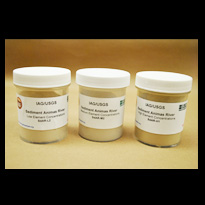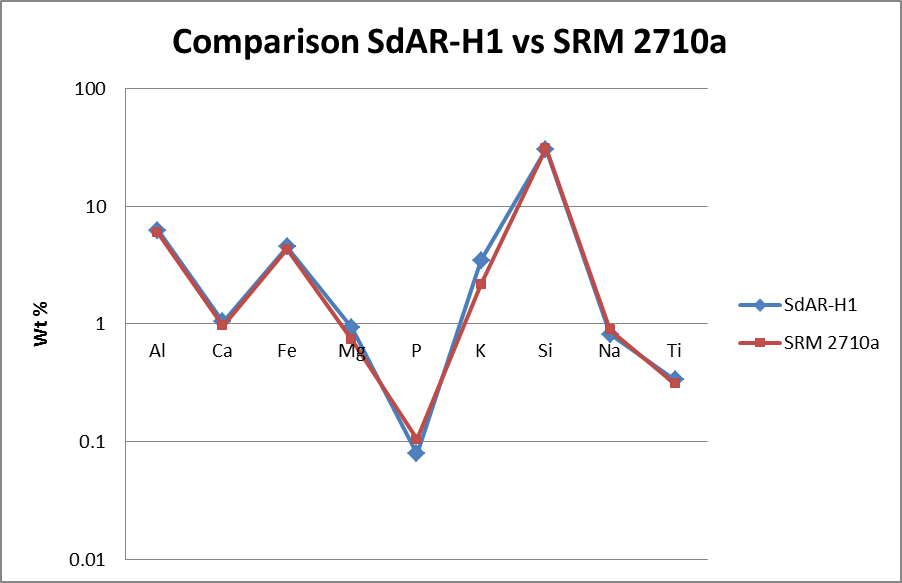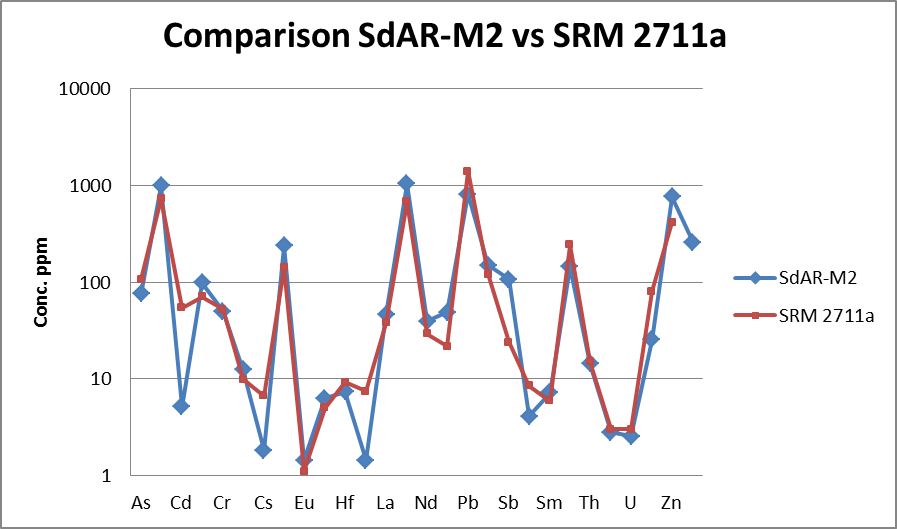 Name: SdAR-L2, SdAR-M2 and SdAR-H1
Name: SdAR-L2, SdAR-M2 and SdAR-H1
Price: Non-Members: $250 each or $600 for a set of the three materials
Description
SdAR total composition data sheet
SdAR aqua regia data sheet
To order: these materials are now available exclusively through LGC Standards (https://www.lgcstandards.com/GB/en/search?text=SDAR)
SdAR reference materials
The SdAR series of reference materials is designed to resemble sediments, soils and related materials sampled when monitoring levels of environmental contamination associated with, for example, discharges from mining operations or industrial pollution. They have been prepared by combining ore-grade materials from multiple locations and diluting the enriched solid with baseline soils and sediment. The use of natural materials maintains the effect of mineralogy on chemical analysis, and the use of distinct blending ratios provides a smooth and gradual calibration over a wide concentration range.
They are available in 80 g aliquots in polycarbonate bottles.
This unique series of three metalliferous sediments with low (SdAR-L2), medium (SdAR-M2) and high (SdAR-H1) concentrations of trace elements has been designed so that all the materials have detectable concentrations of all elements of interest. They are intended for use in the calibration of field portable XRF instruments, as well as reference materials in laboratory analysis. In particular, they have been designed to be used as substitutes for the much more expensive NIST 2709-2711 soil SRMs of very similar composition (see diagrams).
A novel aspect of these materials is that reference values based on aqua regia selective extraction procedures are now also available. These will be particularly useful for laboratories seeking reference materials for aqua regia extractions undertaken at temperatures in the range 90 to 110°C, reflecting procedures commonly used by commercial laboratories servicing the mining and geochemical exploration industries, and for environmental monitoring.


When XRF instruments are used for analysis, the mass of the test-portion analysed may be significantly lower than the recommended minimum mass for laboratory analysis (0.2 g) specified on the relevant data sheet. An annex to the SdAR data sheets gives revised estimates of the uncertainties for use when these materials are analysed with field portable XRF instrumentation with nominal primary X-ray beam diameters of 8 mm and 3 mm.